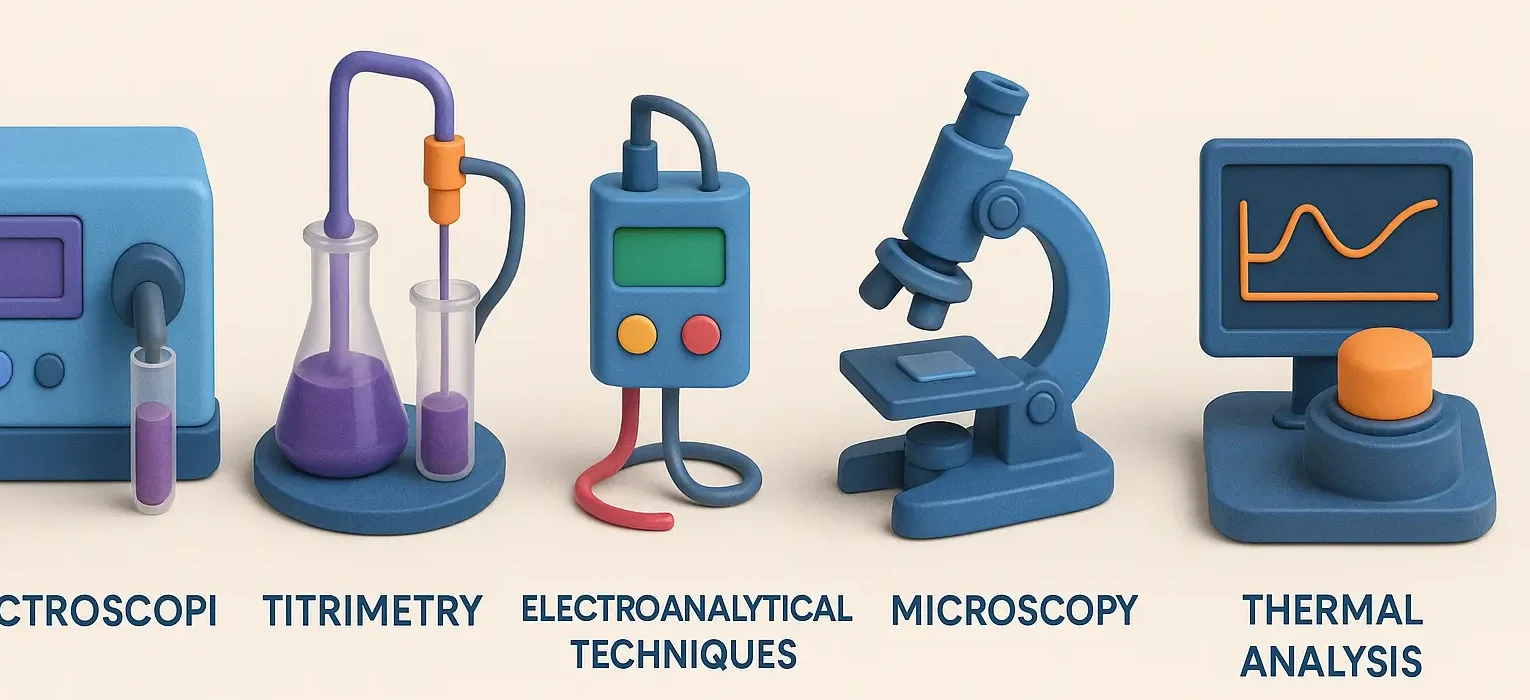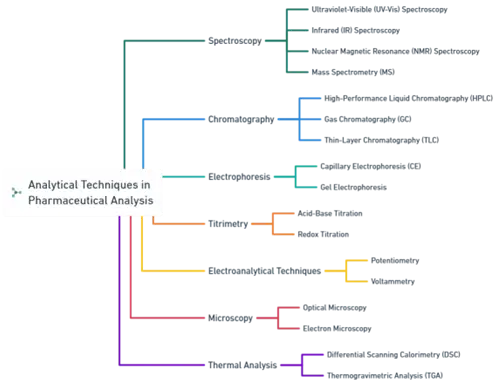- There are numerous analytical techniques used in pharmaceutical analysis, each with its specific applications and advantages.
Most commonly analytical techniques used in pharmaceutical analysis:
1. Spectroscopy:
-
Ultraviolet-Visible (UV-Vis) Spectroscopy:
- Analyzes the absorption of UV and visible light by molecules, providing information on concentration, purity, and molecular structure.
-
Infrared (IR) Spectroscopy:
- Identifies functional groups and chemical bonds in molecules based on their vibrational frequencies.
-
Nuclear Magnetic Resonance (NMR) Spectroscopy:
- Investigates the magnetic properties of atomic nuclei to determine molecular structure and identify compounds.
-
Mass Spectrometry (MS):
- Determines the mass-to-charge ratio of ions to identify and quantify molecules in a sample.
2. Chromatography:
-
High-Performance Liquid Chromatography (HPLC):
- Separates and quantifies components in a mixture using a liquid mobile phase and a stationary phase.
-
Gas Chromatography (GC):
- Separates and analyzes volatile compounds using a gaseous mobile phase and a stationary phase.
-
Thin-Layer Chromatography (TLC):
- Separates components of a mixture on a coated solid support using a liquid mobile phase.
3. Electrophoresis:
-
Capillary Electrophoresis (CE):
- Separates molecules based on their charge and size using an electric field in a capillary column.
-
Gel Electrophoresis:
- Separates molecules, typically proteins or nucleic acids, based on their size and charge in a gel matrix under an electric field.
4. Titrimetry:
-
Acid-Base Titration:
- Determines the concentration of an acid or base by neutralization with a standard solution of known concentration.
-
Redox Titration:
- Involves the use of a reducing or oxidizing agent to determine the concentration of an analyte based on its redox properties.
5. Electroanalytical techniques:
-
Potentiometry:
- Measures the potential difference between two electrodes in an electrochemical cell to determine the concentration of an analyte.
-
Voltammetry:
- Analyzes the current-voltage relationship in an electrochemical cell to determine the concentration and identity of analytes.
6. Microscopy:
-
Optical Microscopy:
- Uses visible light and lenses to magnify and examine the physical properties of small samples.
-
Electron Microscopy:
- Utilizes a beam of electrons to magnify and study the structure and composition of samples at high resolution.
7. Thermal analysis:
-
Differential Scanning Calorimetry (DSC):
- Measures the heat flow associated with phase transitions and chemical reactions in a sample.
-
Thermogravimetric Analysis (TGA):
- Monitors weight changes in a sample as a function of temperature, providing information on composition, purity, and thermal stability.


